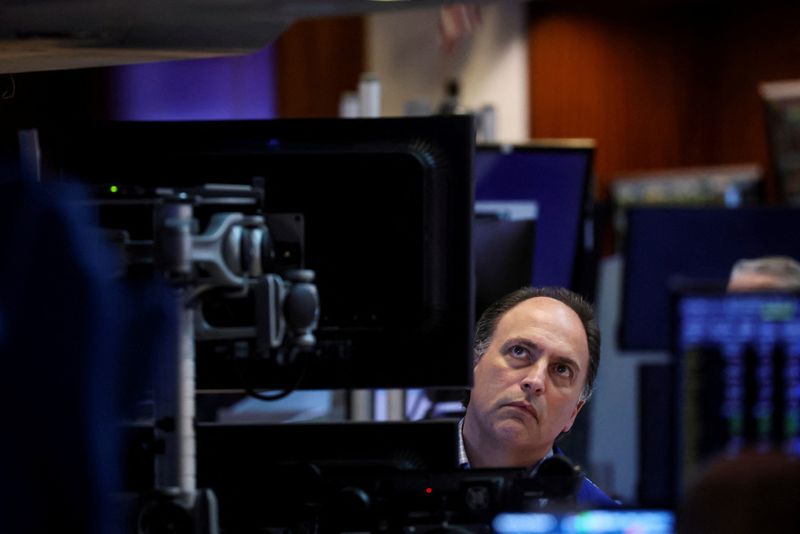Wall St futures flat amid US-China trade jitters; bank earnings in focus
Investing.com - A slide in the S&P 500 into correction territory reflected expectations for a near-term U.S. economic slowdown, although markets are not yet flashing signals of a looming recession, according to analysts at Stifel.
In a note to clients on Wednesday, the analysts said that recessions typically are associated with so-called "bear markets," when equities have slumped by 20% or more from a recent peak.
Last week, the benchmark S&P 500 index confirmed that it had dropped by 10% from a recent high, putting it in correction. The tech-heavy Nasdaq Composite also dipped into correction, while the blue-chip Dow Jones Industrial Average is more than 3% away from the correction threshold.
However, a "relief rally" is tipped to lead to a bounce in the S&P to around 5,850 by the second quarter, the Stifel analysts said. The average finished at 5,675 on Wednesday after rising in the wake of a fresh interest rate decision from the Federal Reserve.
"Defensive Value" stocks -- which include sectors like staples, healthcare, and utilities as well as commodities such as gold -- are "strongly recommended" for longer-term investors looking to ride out the current correction and possible relief rally, the Stifel analysts said.
"Relief rallies typically take up the old winners ([for example], Big Tech [stocks] in Cyclical Growth) because many investors are conditioned in a Pavlov’s dog sense, but longer-term investors should also continue to hold Defensive Value as we see U.S. economic growth fading again more sharply into year-end 2025, as well as fewer Fed rate cuts than implied by futures," the brokerage wrote.
Stifel included semiconductor names like Nvidia (NASDAQ:NVDA), technology hardware player Apple (NASDAQ:AAPL), social media firm Meta Platforms (NASDAQ:META) and electric vehicle company Tesla (NASDAQ:TSLA) in its list of "Cyclical Growth" businesses.
On Wednesday, the rate-setting Federal Open Market Committee kept its benchmark rate steady for a third-straight meeting at a range of 4.25% to 4.5% and flagged that it would take a wait-and-see attitude to further policy moves because of concerns around the impact of President Donald Trump’s tariff plans on inflation and growth.
Traders lifted their bets for Fed interest rate cuts this year after the decision. Investors are now pricing in 68 basis points worth of reductions, up from 56 basis points — or about two quarter-point drawdowns — ahead of the Fed’s announcement.
